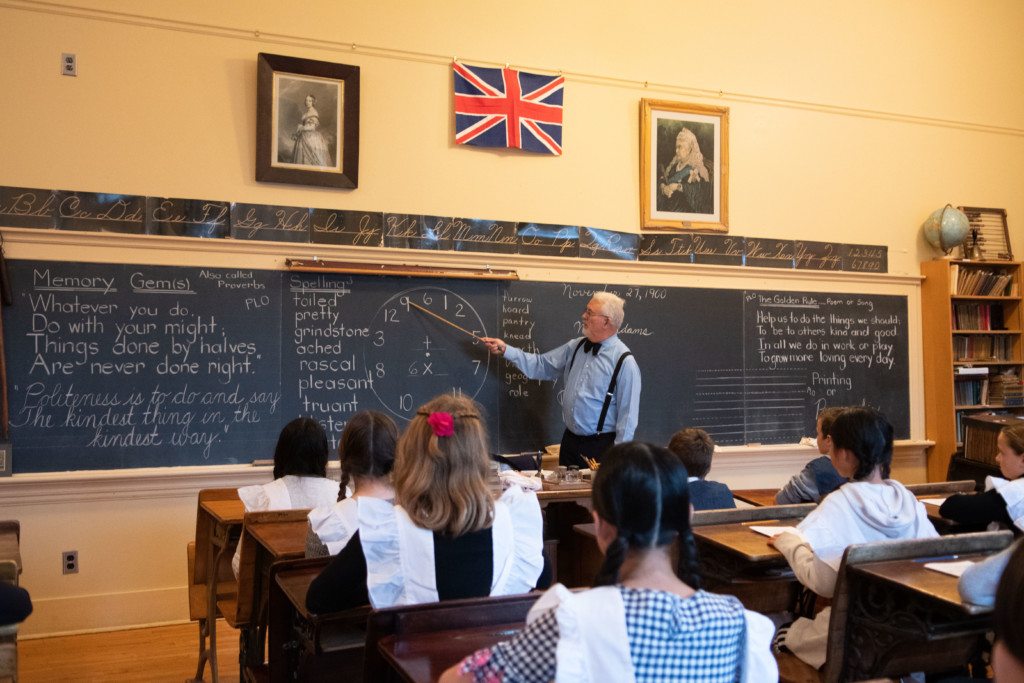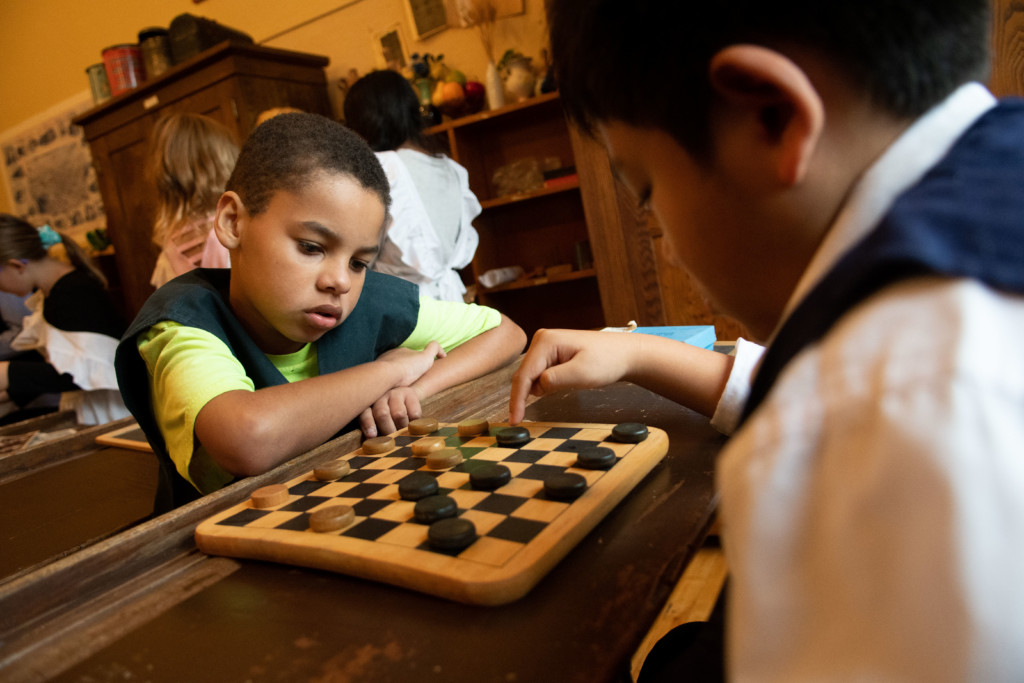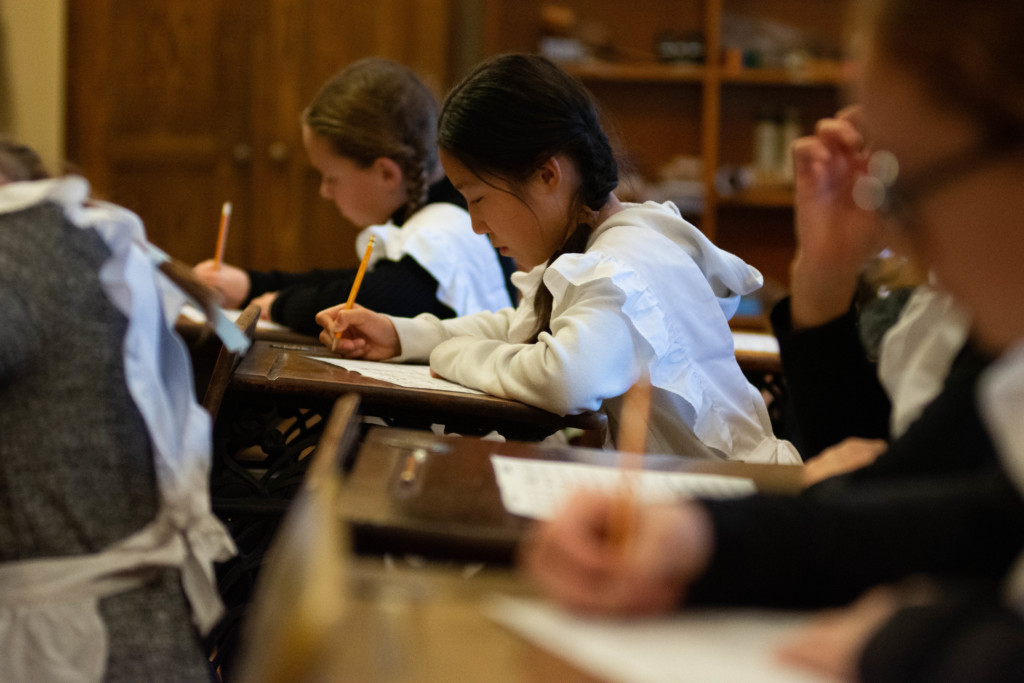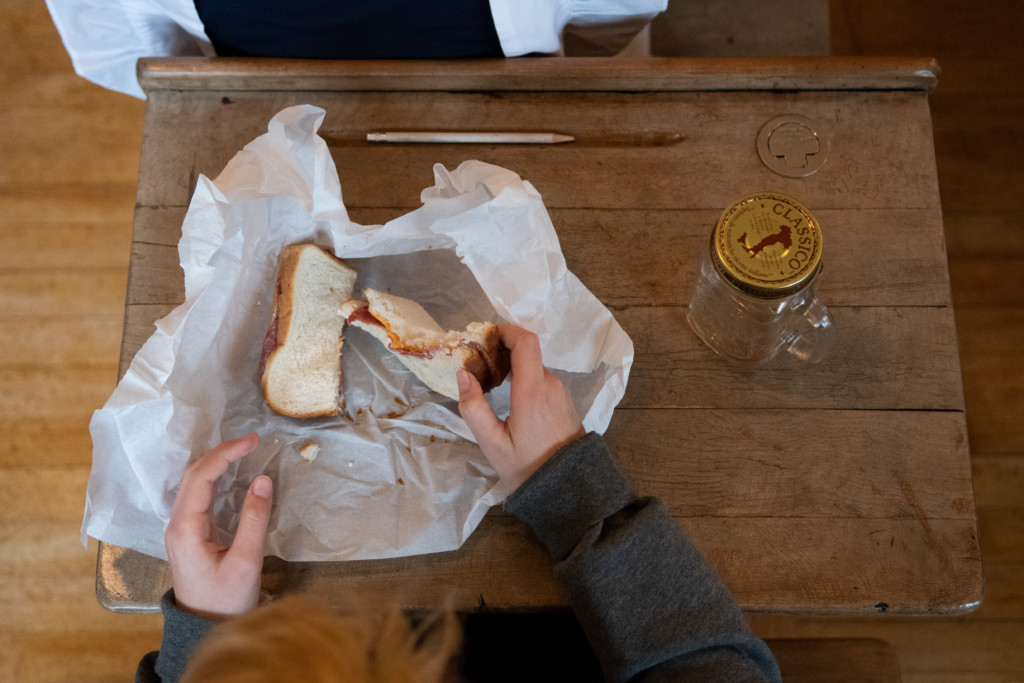January 20th, 2020
Grade 6 students from Bridgeport Public School took a trip, more than 100 years back in time, to the Victorian Classroom at Suddaby Public School in Kitchener in December. Complete with the Union Jack on the wall and antique slates for writing, the historic space, housed in one of the Waterloo Region District School Board’s (WRDSB) most historic schools, offers students a chance to experience what life was like for students in the Victorian era.

The classroom, officially opened to students in September of 1996, was the brainchild of two retired WRDSB teachers, Margaret Dickson and Helen Koepke. The pair elected to have the funds that would have gone to their retirement gifts, instead, donated to support the opening of the Victorian Classroom.
Mary Kitchen is the program coordinator for the Victorian Classroom, and explained that Dickson and Koepke played an integral role in collecting many of the items on display in the room, from the antique clock, to the dollhouse. Each item offers a glimpse into what school was like for children at the turn of the last century. This includes a number of cast-iron desks built locally in Waterloo by the Globe Furniture Co.
“The classroom is furnished with artifacts of the period that complement the experiential learning program provided to students,” said Kitchen. “We’ve tried to make every single thing authentic.”
This includes a shelf of toys from the era. Hand-carved wooden toys, stereoscopes, checkers, and a variety of puzzles are all available for students.
“Good games don’t go out of fashion,” said Kitchen, adding that the students are always eager to get their hands on the timeless toys.

Farah Fatemizadeh, teacher at Bridgeport PS, brought her Grade 6 class to visit the Victorian Classroom, hoping to carry on what has become an annual tradition at the school.
“The Grade 6 teachers before me had been doing it for a good 10 to 15 years,” said Fatemizadeh. “It is a good learning opportunity for the students to see what it was like to go to school nearly 120 years ago.”
Her students had a chance to try their hand at learning arithmetic and spelling in the way it was taught in the Victorian era. Fatemizadeh noticed her students adapted quickly to an environment that was far different than their usual classroom. This included Victorian classroom norms, such as standing to answer questions when called upon and the donning of pinafores and vests over their everyday clothing. Fatemizadeh herself was shocked to learn how precious a resource paper was, as students rarely employed this tool in their learning, instead opting to write with a reusable piece of slate and graphite. She hopes her students return to their own classroom with an increased appreciation for the tools and technology at their fingertips every day.

Mia, one of the Bridgeport PS Grade 6 students, was already reflecting on how different the two spaces were. She pointed out arithmetic, or math, was especially different, as in the Victorian era students were required to simply give an answer to a problem, rather than showing their work, as they do today.
“We’re very fortunate to have everything we have in our regular classroom,” said Mia.
She enjoyed learning about what life was like for residents of Waterloo County in 1900, including what they learned, what they ate, and how they would have acted. Mia especially liked using the slates for writing, as holding the piece of graphite offered a new challenge.
“They used slates,” said Mia. “I have never used one before.”
Vya, also in Grade 6, saw both benefits and drawbacks to going to school in the Victorian era.
The simplicity of life in 1900 appealed to her, but she didn’t like the idea of having to wear a dress regularly.
The students were eager to experience the school day in an authentic Victorian manner, including Braydon, Grade 6, whose entire lunch was limited to items and packaging of the period. Instead of a plastic lunch box and pre-packaged food, his lunch featured a cured meat sandwich, wrapped in wax paper, which was accompanied by water in a glass jar and he finished off his meal with an apple.

Braydon’s favourite part was being able to write using the slate and graphite, as it offered a real change from the pencil and paper he was used to using.
“I just love the sound of writing on the slate,” said Braydon.
For Kitchen, these kinds of reactions illustrate exactly why the Victorian Classroom is a valuable experiential learning resource within the WRDSB. It offers students the chance to see how their ancestors lived, and gain an appreciation for how our community came to be, all while sparking an interest in learning about local history.
“It’s a major part of our history that we need to know and appreciate,” said Kitchen.
She encourages all interested teachers of Grade 2, 3, 5 and 6 classes to sign up to come visit the Victorian Classroom, and take a trip back through time to a simpler era.
“We have a lot of fun, a lot of laughter,” said Kitchen with a smile.
Tags: Suddaby · Victorian Classroom

